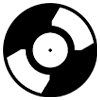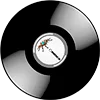
What is experimental? The history, subgenres, artists, and philosophy of experimental music — from John Cage to AI-generated projects.
Experimental (experimental music) is not a genre in the classic sense but an approach. It is a sonic laboratory where rules are broken in the search for new forms. Trends, standards, or BPM don’t matter here — only one thing does: experimenting with sound, structure, and perception.
History and Roots
Experimental music has existed for as long as music itself, but as a distinct movement it took shape in the 20th century.
Key milestones:
-
1950s — avant-garde art music (John Cage, Karlheinz Stockhausen)
-
1960s–70s — minimalism, tape music, musique concrète, free jazz
-
1980s — industrial and noise experiments (Throbbing Gristle, Nurse With Wound)
-
1990s–2000s — electronic avant-gardists: Autechre, Aphex Twin, Oval
-
2020s — fusion with AI, generative music, ASMR, and visual art
Characteristics of Experimental
-
No standard structure: no verse-chorus format
-
Use of unconventional sound sources (noise, environment, objects, voice, resonance)
-
Often no fixed rhythm, or rhythm used in a chaotic / deconstructed way
-
Sound is more important than melody
-
Frequent use of processing, granulation, signal deconstruction
-
May include extremely quiet or loud passages, extended silences
Subgenres and Forms
-
Noise — harsh noise textures (Merzbow, Whitehouse)
-
Glitch — errors, digital artifacts, and glitches as art (Oval, Alva Noto)
-
Drone — slow, sustained tones and evolving harmonics (Tim Hecker, Eliane Radigue)
-
Electroacoustic — blending acoustic instruments with electronics
-
Sound Art / Installation — sound as part of galleries, spaces, and installations
-
Avant-pop — experimental twists on pop structures (FKA twigs, Arca, Björk)
-
AI-generated — music created with AI and generative systems beyond fixed templates
Notable Experimenters
-
John Cage — “4′33″” (a composition of silence and environment)
-
Aphex Twin — a key figure of IDM and unusual sound design
-
Autechre — abstract electronic “mathematics”
-
La Monte Young, Terry Riley — minimalism and drone
-
Björk, Arca, SOPHIE — forward-thinking art-pop
-
Oneohtrix Point Never, Tim Hecker, Ben Frost — immersive soundscapes
-
Holly Herndon, Ash Koosha — AI and algorithmic processes in sound
Tools and Methods
-
Modular synths
-
Field recordings (sounds of nature, cities, spaces, objects)
-
Max/MSP, Pure Data — visual programming for sound
-
AI algorithms and generative models
-
Analog tape, granular processing, resonant filtering
Why Listen to Experimental?
-
It is an experience of sound beyond familiar patterns
-
Trains your ears and sensitivity to subtle detail
-
Helps you step away from everyday noise — or dive straight into it with awareness
-
Widely used in film, sound design, installations, media art
Where to Listen
-
Spotify: Experimental playlists, Ambient/Glitch selections
-
YouTube: channels and mixes from Boomkat, The Wire, FACT
-
Bandcamp: one of the best spaces for underground and niche releases
-
Festivals: CTM (Berlin), Unsound (Poland), Atonal, MUTEK, Terraforma
-
Minatrix.FM: curated experimental music catalog
Conclusion
Experimental is music without borders. It does not aim to please or conform — it explores, provokes, and invites you to hear differently. It is sound as art, where the focus is not on a polished result but on the process: testing limits, colliding ideas, and dismantling familiar forms.
Experimental music opens a space between science and poetry, technology and intuition. There are no “correct” notes here — only an honest dialogue with silence, noise, and time. It’s a place where mistakes can become inspiration, and a random click can turn into the center of a sonic universe.
Today, experimental sound lives in museums, films, galleries, festivals, and in the headphones of listeners searching for depth beyond the charts. It is the music of the future that has long existed in the present — a reminder that sound is not just a form, but a way of thinking.

